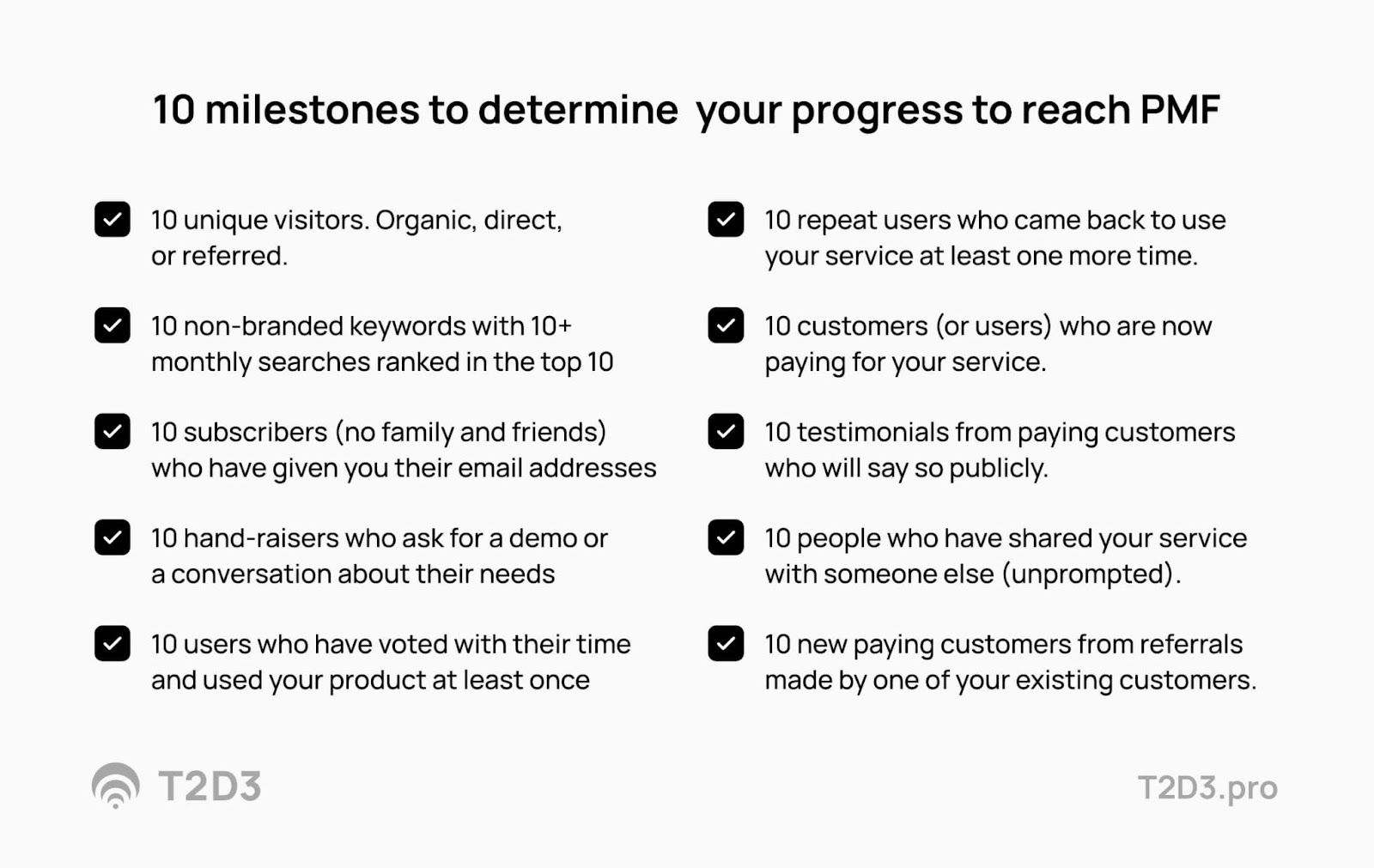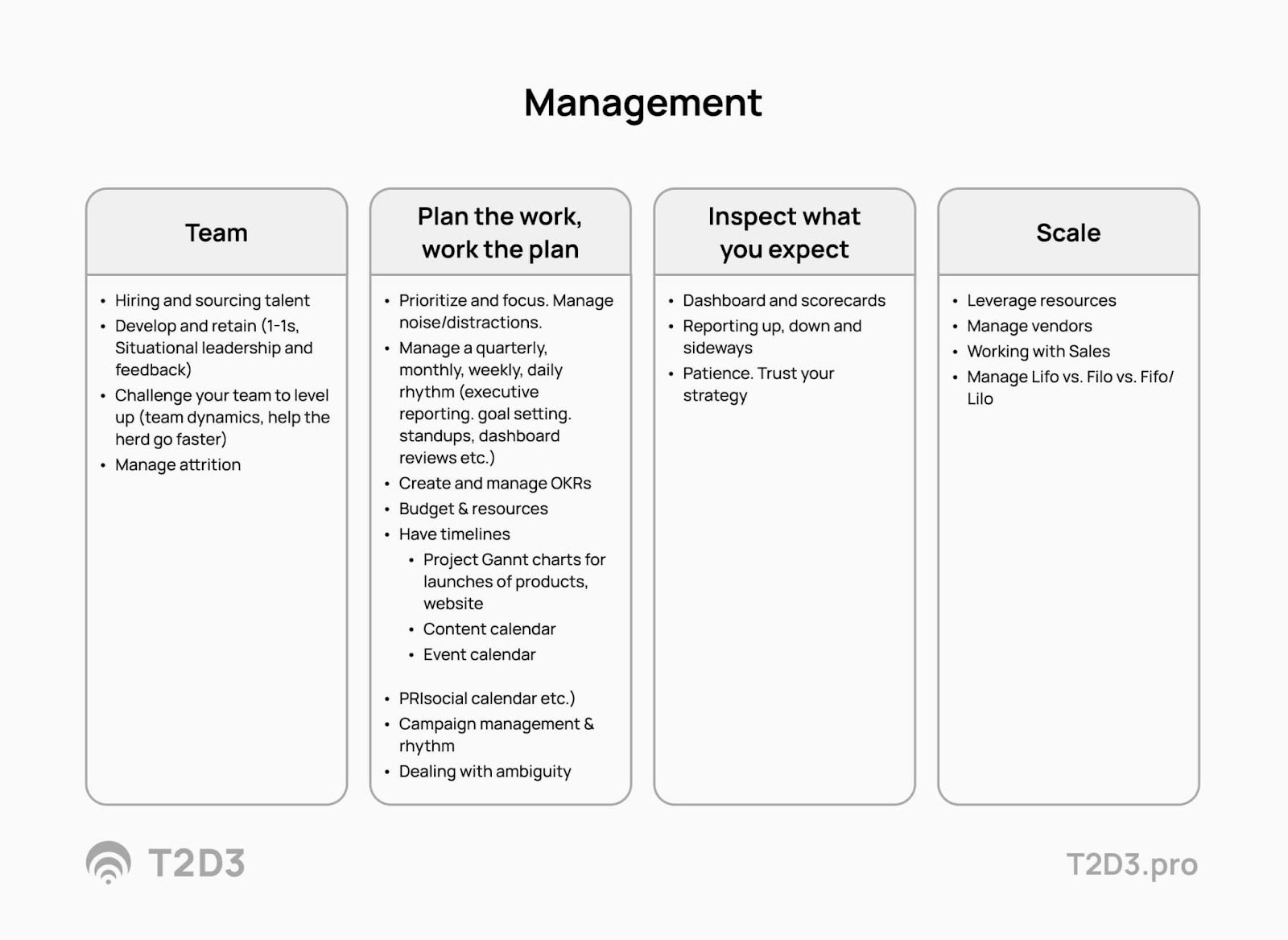In the first part of our Crash Course, we covered some of the challenges and expectations facing a new B2B SaaS CMO. Here we’ll continue to cover the critical areas to be aware of and the mindset and skills necessary to become a marketing superstar.
Balancing long-term and short-term investments
As a marketing leader, you must make short-term bets that drive results quickly without cannibalizing the future. However, you must also implement a long-term strategy that can grow, scale, and doesn’t have diminishing returns. When CMOs get in trouble and lose their jobs, it's often because they bet on one of these extremes and neglected the other entirely.
Someone who bet completely on long-term marketing initiatives may have been trying to convince their CEO and the board that organic marketing and SEO will start ranking over time. Seven, eight, nine months from now, you will see that bear fruit. However, you need to see other results in the meantime to work. People will lose patience and stop projects you started that could have worked. Sadly, now they will never work because they were halted early. It is a mistake to bet only on long-term scalable marketing initiatives that need to get going faster because you'll lose your followers.

Conversely, if you do only things that will give quick returns (i.e., hosting events, investing in a sponsorship or partnership), you're simply buying attention. Those things can help you quickly and be powerful because you learn fast - you can do experiments and get some traction in a specific part of the market. However, suppose that's the only thing you do. In that case, you'll run out of oxygen over time because every market as it develops, and every category will get more expensive to do business in.
As the market matures, the clicks get more expensive. It becomes more challenging to buy the right sponsorship. Competitors will copy what you do - the messaging, content, and products- so competing will become more expensive. As a CMO, you have to balance both short-term and long-term strategies.
Technology - a blessing and a curse
Technology has been a blessing for marketing leaders. An array of marketing and sales technology helps us do more, do it faster, and result in better outcomes. That's fantastic. However, it can also be overwhelming, especially for smaller software companies who just started their marketing function. It's easy to sign up for a lot of new technology because the friction to sign up and try something is relatively low for most of these tools. Before you know it, you have three CRM systems. You have a marketing automation system such as Marketo, and then you have your sales in something like Pipedrive, and your support tickets are something like HubSpot - and now you have three CRMs with three contact records that don't sync easily.

Keeping your marketing technology stack relatively simple is a big challenge for CMOs because tools will creep in quickly, and they won't all work together efficiently.
All these systems, of course, can be connected, but when someone says, "Oh, there's an integration; you can connect it,” the reality is often more complex than people make it out to be, especially if you need reliable dashboards in a matter of months. So more technology tools aren’t necessarily the right move.
Simplicity in your technology goes hand in hand with balancing the multiple types of growth initiatives that successful modern CMOs need to drive simultaneously. If your company expects to drive exponential growth to follow the T2D3 curve, then you as the marketing leader, need to be comfortable with many of your different growth levers. From driving more MQLs and funnel volume at the correct customer acquisition cost to an efficient way to generate demand and diverse channels at the right price level.
All of this has to convert well. Conversion relies on everything from landing page optimization to content in the funnel to lead magnets to your handoff with sales. You have to have control over the handoff from marketing to, for example, the SDR team. It has to happen quickly and efficiently as leads grow old quickly.
Alignment on your company journey
When you're the CMO of a B2B SaaS company, you must ensure that your leadership team is aligned with where you are in your company journey. I like to use this model that illustrates the significant milestone to get to MVP - the minimum viable product in which a few customers have said, "Yes, we think this has value for us.” They sometimes vote with their time, not always with their wallet. They may not all be paying yet, but you have clear market feedback that there's something here that people find valuable and that they would be willing to pay for. That's step one.

The next step is to get to product-market fit (PMF), which is validating MVP at scale and a larger number of customers who not only pay but stay - they don't churn; they tell others about your product/services. That's when a B2B SaaS company needs to pour more fuel on the fire and invest in the growth engine. This is the T2D3 phase. These days it’s also critical that exponential T2D3 growth can no longer come at any cost. Growth capital is no longer cheap, so the sooner you can also start making your growth relatively profitable (shift focus from CAC, customer acquisition cost, to CTS, cost to service) and sustainable (also known as the “rule of 40”.)
Ultimately, you reach the home base, which can be described as reaching 100 million ARR.
As the CMO, the tactics you deploy, the strategies you use, and the type of team you hire vastly differ in each phase. You won’t use the same game plan when you're still trying to get to MVP as when you're trying to get to PMF or when you're ready to invest in T2D3 growth. Each requires different strategies and tactics to support that stage.
The CMO must get that alignment early on from the executive team. The most underestimated problem is the definition of product market fit. Below is a cheat sheet - a simplified checklist to gauge how close you are to PMF.

If you're the CMO who starts in a new software company, the CEO and the VP of Product may have decided that product market fit has already been achieved. However, confirming that needs to be validated by asking questions like:
- How many customers are actually paying?
- How many have told you they like the product?
- How many agree to put their opinion on your website in a testimonial?
Those are the milestones to hit to confirm and consolidate your product market fit position and get alignment early on with the rest of your executive team. This is critical to the success of your role as CMO of a new B2B SaaS company.
Another critical alignment or question when you are getting going as a new B2B SaaS CMO is what type of go-to-market your business model can support.

In this table, ACV stands for average deal size. You could also use ARPU on this horizontal access or the revenue per customer - a vital input variable when considering what you can afford when you go to market. If you have relatively small customers, let's say they pay you less than $1,000 per year, then your options to invest in marketing and sales are very limited. If you have such a low ACV, you have to do product-led growth. You have to have a very efficient, low-friction way for customers to discover your product, try it, and buy it without any help from sales and with little help from marketing.
If you have an ACV lower than $1,000 per year, buying clicks (PPC clicks or pay-per-click marketing) is tough. You can use that to get going, to get your first group of customers, but if you pay $80 for a click and you need 50 clicks to get one customer, that's $4,000. If your customer will only pay you $1,000 per year, it takes you four years to make that money back. That would not be economically viable.
If you are in the mid-range, let's say customers pay you between $1,000 and $10,000 per year, you can afford marketing. But you have to be careful what type of marketing. You need to ask yourself, “What is the customer acquisition cost? Is it efficient and scalable?:.
In this middle-tier, service-led refers to things like customer success or onboarding. So, service-led uses resources and invests in marketing and customer success. Still, those resources have to scale relatively broadly and generate a large volume of funnel for those economics to work. And then, sales-led is the highest cost model where you invest in account executives in a high friction sales model. Often by design, if you hire salespeople, they almost don't want the friction to be low. They want to have to talk to prospects so that they can optimize the amount of dollars they spend with you. They can maximize that. That's why you have a sales organization. However, that needs to lead to customers who spend at least $100,000 for you per year, maybe much more over time.
So, this is a fundamental data point when you consider accepting a job or building your plan. It will have some of the most significant impact on what you can do.
Arming yourself for success
So what type of skillset do you need to conquer the challenges a modern CMO faces? What are the tenants and strengths of a current marketing leader? I group them into three buckets: management, leadership, and ROI.

Management is the running of the marketing function. This consists of things like:
- Building a team: hiring, developing, and retaining people
- Strategy: developing, working on, and delivering a plan
- Rhythm: managing weekly meetings, monthly OKR check-ins, and dashboards to measure progress

As the CMO of a company, you also need to be seen as the marketing leader, not only by your team but by your peers in the executive suite, your CEO, the board, and your partners. So, that leadership role, being the trusted advisor for your peers, means having a reputation they can count on - the buck stops with you when it comes to things like quality of communication, the image of the company, or the reputation of the brand. These qualities are so different from management that I put them under a separate leadership category that will define whether you, as the marketing leader, will be taken seriously by your constituents and that they will follow you for some of the more strategic things that the company needs to do.
Finally, all must be done at the right ROI level. If you're a fantastic marketing leader, everybody loves you, you're managing every part of your function, you have a great budget, you have great dashboards, but you don't have leads, or you have a lot of leads, but they're too costly, there's no good ROI. Your demand generation is not sustainable because it's very expensive. So, ROI is critical. Drive results at the right cost.
One of the key takeaways here is to find alignment and find balance.
To wrap up, here are some best practices for a CMO:
- Always be testing
- Always be hiring
- Balance inbound and outbound
- Match your ambitions to your ACV
To get more detailed information and training, join the T2D3 Masterclass! The T2D3 CMO Masterclass program is designed to give you everything you need to build, execute, and manage a complete go-to-market for your B2B SaaS company.